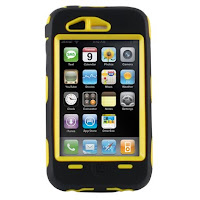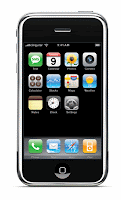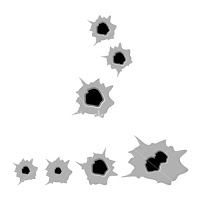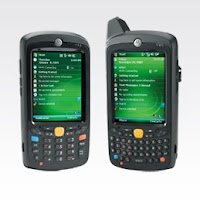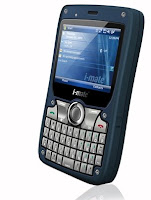Companies now days are looking for ways to do more with less. Many recognize that their mobile workforce is being
managed inefficiently and extending
business process automation to mobile field workers is becoming a priority. Saving fuel, reducing paper, reducing administration work load, more efficient dispatches are all important.
The following 13 points identify how you can get started automating and mobilizing these business processes.
Step 1 – Understand the ROI/Scope of the Project and Plan Ahead“What’s the number one reason a mobile project fails?” is a common question we get asked. The answers are that many companies don’t put enough upfront thought into defining the requirements, scheduling testing resources and planning a deployment strategy. The results of these deficiencies are project scope creep, cost overruns, missed deadlines, poor user acceptance and sometimes even complete project failure.
Step 2 – Build a Team of StakeholdersMake sure the members of your team have the right roles and responsibilities to help the project succeed. Mobile solutions usually tie into other corporate IT assets and business processes, therefore impacted members of your IT department and business units need to be on the project team.
In addition, a representative mobile field worker(s) should be included on the project team to provide valuable “real-world” insight. Don't forget the folks running the IT helpdesk. They are likely to get called when the mobile handheld PDA runs out of battery, memory or needs repaired or replaced.
Step 3 – Select a Partner That Specializes in Mobility SolutionsPerforming successful data synchronization from mobile computing devices can be a challenging and complex task. There are many variables that can affect the results of synchronization. To insure you get your solution done correctly the first time, you need experienced experts in mobile technology. You need technologists who specialize in the design, development, deployment and support of enterprise mobile solutions.
Step 4 – Know Your Target UsersDuring the planning and scoping phase of your mobile project, take time to experience the working environment of your mobile workers and observe the business processes in action. Pay specific attention to how information is collected and exchanged between the office and the mobile workers. These observations can significantly impact the design, development and deployment of a successful project!
Step 5 - Evaluate the user environmentHow do moist, cold and dirty environments impact the mobile devices? How does low light or bright sunlight affect visibility of the screen? Can workers read the small text on the PDA screen, or does the text need to be larger?
Step 6 – Don’t Underestimate the Complexity of Synchronizing Field DataStep 7- Understand the technical challenges and issuesOne of the biggest mistakes a project planner or IT department can make is to underestimate how complex data synchronization can be. Part of designing a solid and reliable mobile solution is to select robust synchronization middleware and to spend time designing and testing the data synchronization. Without the right middleware and design your end users could encounter issues such as extra long sync times (hours, not minutes), duplicate records, incomplete data, lost data and even database corruption. Every one of these issues will trickle down to your support department, so designing it right the first time is very important.
Step 8 – Build in PhasesMost successful projects involve a series of phased implementations. Each phase can be developed, tested and implemented in an orderly manner. Once a phase is deployed and proven, additional phases can be layered on top that include more features and added complexity. Remember, the more data requirements that you add the more data you must synchronize, and the longer each synchronization session will take. Only synchronize data that your remote users require in the field. In addition, most mobile devices don’t have the same CPU power or memory as a PC/laptop, so be aware of how the performance of your solution will be affected by a smaller, lower powered device.
Step 9 – Evaluate Your Hardware and Connectivity NeedsThe term “mobile devices” can have many different interpretations. Today, laptops, Tablet PC’s, UMPCs, PDAs and Smart phones are all identified with this term. When determining the best mobile device for your project you will want to consider screen size, data storage capacity, security, physical working environment, required hardware accessories such as barcode scanners, GPS, digital cameras, RFID, and the ability to upgrade the device with updated hardware and software components.How do you connect your mobile device to your enterprise database applications? You have many options including cradle, WiFi, satellite, Bluetooth, wireless, dial-up modems and satellite uplinks to name a few. The method(s) you choose will be affected by how often your mobile workers need to send/receive data. How much data will be transmitted and will they always have connectivity. Study each option, your working environment and consult your mobility partner to make the best selections.
Step 10 – Deploy to a Limited Focus Group, Evaluate and ImproveOnce you have completed version 1 of your mobile solution and you are ready to deploy in the real world, roll out your solution to a small group of trusted and motivated users. Define a specific period of time to evaluate the solution, document the results and identify any required changes and improvements. The result of this evaluation should be an improved mobile solution that is ready for wide deployment.
Step 11 – Set and Enforce Hardware and Security PoliciesMobile devices are small computers with the ability to store sensitive corporate data, communicate this data over the Internet and even catch viruses. You must clearly communicate how mobile devices are to be used and for what purpose. Establish and publish guidelines for using mobile devices.
Step 12 – Provide Full Support for Mobile UsersMobile devices are guaranteed to break. What is your plan for keeping a mobile worker productive and communicating business critical information when their mobile device ceases to function or gets misplaced? These are inevitable issues that are best planned for in advance. Have a plan and a documented back up process.
Step 13 - Select a technology partner that understands your business applications and ERPI f you use SAP, make sure that the mobile technology partner you select is also an expert in SAP mobile.
***********************************************
http://mobileenterprisestrategies.blogspot.com ***********************************************



